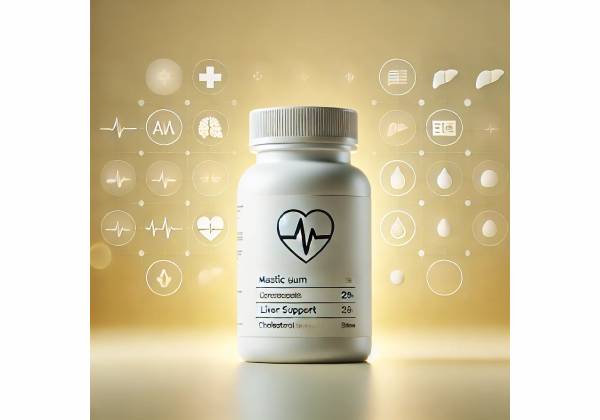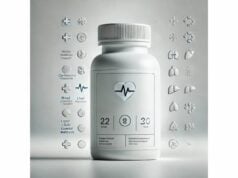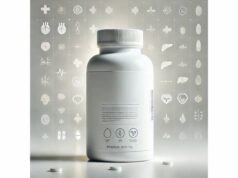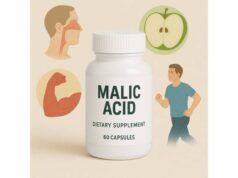
Mastic gum is the aromatic resin from the Mediterranean mastic tree (Pistacia lentiscus). For centuries, it has been chewed as a natural gum and used as a digestif. Today, you will also find it in capsules, tinctures, and topical products. Interest has surged because modern studies suggest benefits for functional dyspepsia (indigestion-like symptoms), diabetic gastroparesis, oral hygiene, and select cardiometabolic markers. These effects are linked to bioactive triterpenes and essential oil components with antimicrobial, anti-inflammatory, and antioxidant activity.
This guide distills what mastic gum is, how it seems to work, where evidence is strongest, and how to use it sensibly. You will learn practical dosage patterns studied in humans, what to expect week-by-week, and how to choose high-quality resin or oil. Equally important, you will see where claims outpace data, when not to self-treat (for example, Helicobacter pylori infections), and who should avoid mastic gum. Whether you are curious about chewing the traditional “tears” or prefer standardized capsules, the sections below give you a clear, research-aware roadmap.
Essential Insights
- Improves upper-GI comfort in some people; human trials show symptom relief in functional dyspepsia over 3 weeks.
- Supports oral hygiene: small trials report reductions in plaque indices and halitosis with mastic-containing products.
- Typical oral dose: 350–1,000 mg/day of resin (divided), for 2–8 weeks; chewing a pea-sized tear 1–3 times/day is a traditional alternative.
- Safety caveat: do not use mastic gum alone to treat Helicobacter pylori; follow standard medical therapy.
- Avoid if allergic to pistachio/cashew family, during pregnancy or lactation (limited data), or with planned surgery unless cleared by a clinician.
Table of Contents
- What is mastic gum and how it works
- Proven benefits for stomach and mouth
- How to use mastic gum daily
- How much mastic gum per day
- Safety, side effects, and who should avoid
- What the evidence says today
What is mastic gum and how it works
Mastic gum is a natural resin tapped from the bark of Pistacia lentiscus, a small evergreen native to the Mediterranean, especially the Greek island of Chios. As the sap dries, it forms translucent “tears” that soften when chewed. In traditional use, people chewed the resin after meals to freshen breath and settle the stomach. Modern preparations include:
- Raw resin tears for chewing or grinding.
- Standardized capsules containing powdered resin.
- Essential oil (mastic oil) distilled from the resin and formulated in softgels or topicals.
- Toothpastes and mouthwashes that incorporate mastic extracts for oral care.
What is in it? The resin concentrates triterpenes (e.g., masticadienonic and isomasticadienolic acids) alongside smaller fractions of phenolics and phytosterols. Mastic oil contributes monoterpenes such as α-pinene, myrcene, and limonene. Together, these give mastic gum a characteristic pine-balsamic aroma and a biologically active profile.
How might it work? Several complementary mechanisms are proposed:
- Antimicrobial action in the GI tract and mouth. Terpenes in mastic show activity against common oral biofilm species and select gastric bacteria in experimental models. This is likely one reason chewing mastic has a long history for mouth health and post-meal comfort.
- Anti-inflammatory signaling. In cell and animal work, resin triterpenes can blunt pro-inflammatory pathways (e.g., TNF-α–linked cascades) and decrease expression of enzymes like COX-2 and inducible nitric oxide synthase. Clinically, this may translate into symptom relief in conditions marked by low-grade mucosal inflammation, such as functional dyspepsia.
- Antioxidant effects. Mastic components can modulate oxidative stress markers and may reduce lipid oxidation, a property now being explored for cardiometabolic support.
- Barrier and mucosal support. Users often report a coating, soothing sensation. In vitro and pilot clinical findings suggest improved mucosal resilience, which may explain benefits for meal-related upper-abdominal discomfort.
Key point: Mastic gum is not a universal fix for every digestive or dental problem. Where evidence is strongest, it tends to improve symptoms (for example, upper-abdominal pain and burning) rather than cure an underlying disease. For bacterial infections such as Helicobacter pylori, it should not replace guideline-based therapy.
Forms matter. Resin powder, mastic oil, and chewable tears deliver different compound profiles and may not be interchangeable for every purpose. For example, oral-care products leverage local antimicrobial effects, while capsules target gut exposure; essential-oil softgels are being studied for lipid support.
Proven benefits for stomach and mouth
Digestive comfort (functional dyspepsia). Functional dyspepsia causes upper-abdominal pain, fullness, and heartburn-like symptoms without visible ulcers. In a randomized, double-blind, placebo-controlled trial of adults meeting diagnostic criteria, mastic gum (350 mg three times daily for three weeks) reduced total symptom scores significantly compared with placebo. The clearest improvements were reported for general stomach pain, pain when anxious, upper-abdominal ache, and heartburn. People often notice benefits within two to three weeks of steady use. Because dyspepsia is multifactorial, mastic is best combined with meal-timing habits (smaller, earlier dinners, reduced alcohol) and a review of reflux triggers.
Diabetic gastroparesis (specialized use). Gastroparesis is delayed gastric emptying, most commonly seen in long-standing diabetes. In an observational extension of a randomized trial, adults taking 500 mg of mastic gum twice daily for eight weeks reported sustained improvements in gastroparesis symptom scores at 24-week follow-up, with no significant safety signals. While these data are preliminary and from a single-center experience, they point to a potential adjunct for symptom management under medical supervision.
Helicobacter pylori: manage expectations. Early pilot work explored mastic gum as an antimicrobial against H. pylori, using 350 mg three times daily (1.05 g/day) and higher doses for two weeks. Eradication rates were modest and inconsistent. Standard medical therapy—typically combination antibiotics and acid suppression—remains the recommended approach. If you are being treated for H. pylori, do not swap prescribed therapy for mastic gum. At most, discuss with your clinician whether to use mastic alongside guideline therapy for symptom control.
Oral hygiene and breath. Mastic’s story arguably starts in the mouth. Clinical studies suggest benefits for:
- Halitosis (bad breath): A randomized, placebo-controlled trial in orthodontic patients using a mastic toothpaste three times daily for two weeks reduced hydrogen sulfide levels (a key malodor gas) and improved plaque and gingival indices versus placebo.
- Plaque control: Earlier small trials of mastic-containing gums reported reduced plaque formation and lower gingival inflammation over short periods without additional brushing.
- General mouthfeel and dryness: Chewing mastic stimulates saliva. A pea-sized tear typically softens in a minute or two and can be chewed for 15–20 minutes after meals.
Who benefits most?
- People with meal-related upper-GI discomfort who want a short trial before or alongside conventional options.
- Those using braces or retainers who need extra help with halitosis and plaque (with dentist guidance).
- Adults seeking a gentle adjunct for cardiometabolic hygiene who are not candidates for—or are already optimized on—standard lipid-lowering therapy (see below for evidence boundaries).
Where claims are ahead of data. Mastic gum is being studied for lipid profiles, blood pressure hemodynamics, and inflammatory bowel conditions. Some trials of crude resin or mastic oil show reductions in total and LDL cholesterol over 8 weeks, but protocols vary (resin vs. essential oil, dose, and population). Treat these as emerging areas, not established indications.
Bottom line: The most consistent human data support upper-GI symptom relief and adjunctive oral hygiene. Effects on eradication of specific pathogens or on long-term disease outcomes require larger, confirmatory trials.
How to use mastic gum daily
You can use mastic gum three main ways: chewable resin tears, capsules of powdered resin, and mastic oil softgels or oral-care products. Choose the form that fits your goal and lifestyle.
1) For functional dyspepsia–type symptoms (stomach pain, burning, fullness)
- What to use: Capsules with powdered resin.
- How: Take with water before meals or between meals to expose the upper GI lining.
- Pattern: A common evidence-based pattern is 350 mg three times per day for 3 weeks. If symptoms improve, some people taper to 350–500 mg/day for maintenance (1–2 weeks), then pause and reassess.
- What to expect: Gradual symptom relief across 1–3 weeks; best results come with consistent dosing and meal-timing habits.
2) For diabetic gastroparesis (only with clinical oversight)
- What to use: Capsules with powdered resin.
- How: 500 mg twice daily for 8 weeks has been studied, followed by reassessment at 3–6 months.
- What to expect: Changes in overall symptom scores rather than a cure; continue diet, glucose control, and prescribed prokinetics per your clinician.
3) For oral hygiene and halitosis
- Chewing method: After meals, chew one pea-sized tear for 15–20 minutes. It will soften and become opaque. Discard after flavor fades.
- Toothpaste or rinse: Use twice or three times daily as directed. A two-week trial is usually enough to judge effect.
- Tip: If you find the classic resin too firm at first, warm it briefly in your mouth or between fingers before chewing.
4) For exploratory lipid support (emerging area)
- What to use: Mastic oil (essential oil) softgels or resin capsules, depending on product and practitioner guidance.
- How: Protocols in trials vary. One randomized study used 200 mg mastic oil capsules for 8 weeks. Crude resin regimens have ranged from 1 g/day to higher doses in small studies.
- What to expect: Potential reductions in total and LDL cholesterol over 8 weeks in select populations; always prioritize foundational care (dietary pattern, physical activity, statins or other indicated prescriptions).
Practical tips
- Start low, build consistency. If you are sensitive to supplements, begin with 250–350 mg/day for several days, then increase to a target plan.
- Time it right. For stomach support, taking mastic away from antacids may help maintain local GI contact with the resin’s actives.
- Cycle and reassess. Many users adopt a 2–4 week cycle, pause, and review symptoms rather than taking mastic indefinitely.
- Combine with fundamentals. Smaller evening meals, reduced alcohol, and stress reduction amplify GI benefits. Meticulous brushing and flossing amplify oral-care benefits.
What not to do
- Do not replace H. pylori eradication therapy with mastic gum.
- Do not chew hard resin if you have TMJ disorders, dental work at risk, or braces (use toothpaste/rinses instead).
- Do not double-up on resin and oil indiscriminately; pick the form that matches your goal.
How much mastic gum per day
Your optimal dose depends on your goal, tolerance, and the form you choose. Use the ranges below as starting points informed by human studies and traditional practice, then personalize with your clinician.
Evidence-informed oral dosing (adults)
- Functional dyspepsia: 350 mg three times daily (1.05 g/day) for 3 weeks, then reassess. If improved, consider a short maintenance taper (e.g., 350–500 mg/day for 1–2 weeks) before a break.
- Diabetic gastroparesis (adjunct): 500 mg twice daily (1 g/day) for 8 weeks, under specialist care.
- Exploratory lipid support: 200 mg mastic oil capsules for 8 weeks have been studied; resin regimens of 1 g/day have also been used. Because products differ, follow labeled instructions and clinician guidance.
- Oral care: Chew one pea-sized tear for 15–20 minutes after meals, 1–3 times daily; or use mastic-containing toothpaste two or three times daily.
Timing, meals, and interactions with other products
- With or without food? For upper-GI symptoms, taking resin before meals or between meals may allow better contact with gastric and esophageal mucosa.
- Acid suppression meds: If you are on proton pump inhibitors (PPIs) or H2 blockers, separate mastic by 2–3 hours while you gauge benefit, since reduced stomach acidity may alter resin behavior.
- Antacids: Separate by at least 1–2 hours.
- Other supplements: If you use fibers (psyllium) or binders (charcoal), take mastic 2 hours apart to avoid adsorption.
How long until results?
- Stomach comfort: Expect incremental change over 1–3 weeks; stop if there is no benefit by week 4.
- Oral hygiene: Changes in breath and plaque indices can appear within 1–2 weeks of consistent use.
- Lipid markers: Trials assessing cholesterol used 8-week durations; recheck labs after that window.
How to titrate
- Pick the smallest effective dose from the ranges above.
- Track symptoms (e.g., daily notes on pain, fullness, breath freshness).
- If well tolerated but underwhelming after 7–10 days, increase within the stated range.
- Pause after a cycle (2–8 weeks depending on goal) to reassess need.
Who needs special dosing advice?
- Older adults and those with polypharmacy should review doses with a clinician to avoid interactions.
- People with sensitive teeth or jaw pain should prefer toothpaste/rinse over hard resin tears.
- Those with metabolic conditions (diabetes, dyslipidemia) should integrate mastic into a larger care plan, not as the only tool.
Children and adolescents
Clinical research is limited. Do not use resin capsules in children without pediatric guidance. For teens with braces, mastic toothpaste (not hard resin) may be considered in consultation with a dentist or orthodontist.
Safety, side effects, and who should avoid
Overall safety profile
Across modern trials and real-world observations, mastic gum has been well tolerated at the doses used for dyspepsia, gastroparesis, oral care, and lipid exploration. Reported side effects are typically mild and transient.
Common, usually mild effects
- GI: Early fullness, mild constipation or loose stools, nausea if taken on an empty stomach (often improved by lowering dose or shifting timing).
- Mouth: Temporary jaw fatigue or tooth sensitivity from chewing hard tears; rare gum irritation if chewed excessively.
- Taste/smell: Pine-resin aftertaste from resin or oil—generally fades within minutes.
Less common/precautionary concerns
- Allergy: The mastic tree is in the Anacardiaceae family (pistachio, cashew, mango). Anyone with known tree-resin or Anacardiaceae allergies should avoid mastic. Discontinue if you develop rash, hives, swelling, or breathing difficulty.
- Pregnancy and lactation: Insufficient safety data. Avoid unless your obstetric clinician explicitly recommends it.
- Children: Limited evidence; avoid capsules without professional input.
- Dental hardware/TMJ: Avoid hard resin tears if you have braces, crowns at risk, or temporomandibular joint disorders; use toothpaste or rinses instead.
- Surgery and bleeding risk: While mastic is not known to be a strong anticoagulant, many clinicians advise stopping herbal supplements 1–2 weeks before elective surgery as a general precaution.
- Medication interactions: No high-quality human data show clinically significant CYP450 interactions at typical doses. Even so, if you take narrow-therapeutic-index drugs (e.g., warfarin, anti-seizure meds), involve your prescriber before starting mastic.
When to seek medical care
- Alarm features with upper-GI symptoms: unintentional weight loss, progressive difficulty swallowing, black stools, vomiting blood, or anemia—seek evaluation promptly.
- Suspected H. pylori or ulcer disease: Get tested and follow standard eradication or ulcer therapy.
- Persistent halitosis: Could reflect dental caries, periodontal disease, sinus infection, or reflux; coordinate with a dentist or physician.
Responsible use checklist
- Set a specific goal (e.g., “reduce post-dinner upper-abdominal pain in 3 weeks”).
- Choose the matching form (capsules for GI, toothpaste/rinse for oral care).
- Use a time-limited trial with a preplanned stop to reassess.
- Track objective markers when relevant (plaque/gingival scores from your hygienist, lipid labs at 8 weeks).
- Avoid using mastic as a stand-alone treatment for infections or chronic diseases that require medical therapy.
What the evidence says today
Where the evidence is strongest
- Functional dyspepsia: A randomized, double-blind, placebo-controlled trial using 350 mg three times daily for 3 weeks showed significant reductions in symptom scores versus placebo. Clinically, this aligns with many users’ reports of smoother digestion and less upper-abdominal pain after consistent use.
- Oral hygiene: Controlled studies of mastic-containing products report reductions in halitosis gases and improvements in plaque and gingival indices over 1–2 weeks of use—particularly relevant for people wearing orthodontic appliances who struggle with plaque retention.
- Real-world gastroparesis symptom management: In an observational follow-up to a randomized trial, adults with diabetic gastroparesis taking 500 mg twice daily had sustained symptom improvements at 24 weeks with good tolerability.
Where the evidence is promising but not definitive
- Cardiometabolic markers: Trials using mastic oil softgels and crude resin have observed decreases in total and LDL cholesterol over 8 weeks in selected populations. Protocol differences (resin vs. oil, capsule strength, and baseline risk) make it premature to equate these findings with standard lipid-lowering therapy. Consider mastic as an adjunct to, not a replacement for, diet and prescribed medications.
- Inflammatory pathways and oxidative stress: Mechanistic and small clinical studies suggest mastic decreases inflammatory mediators and lipid oxidation. These biological signals support ongoing trials but have not yet translated into robust, long-term outcome data.
Clarity on H. pylori
Early pilot work explored mastic against H. pylori using 1.05 g/day and higher doses for 2 weeks. Eradication occurred in a minority of participants, while standard triple therapy achieved far higher success rates. This matters: it is reasonable to use mastic for symptom relief, but not as a replacement for evidence-based eradication regimens. If you have a positive test, follow medical therapy and ask your clinician if mastic is appropriate as an adjunct for comfort.
Quality and standardization considerations
- Resin vs. oil: Resin capsules and chewed tears provide triterpenes plus minor volatiles; essential oil softgels concentrate monoterpenes. Do not assume the same dose of oil mirrors the effects of resin.
- Product origin: Genuine “Chios mastic” is a Protected Designation of Origin product with a characteristic profile. Reputable brands disclose botanical name, part used (resin), extraction method, and per-capsule dose.
- Testing: Favor products with third-party testing for identity and contaminants (heavy metals, solvents, adulterants).
- Label specifics: For capsules, look for per-capsule mg and serving size; for toothpastes, look for percent extract and clear directions.
Take-home synthesis
- For upper-GI symptom relief and oral hygiene, mastic gum earns a cautious “yes—worth a structured trial.”
- For cardiometabolic support, mastic can be explored as an adjunct after core measures are in place, recognizing evidence heterogeneity.
- For H. pylori, mastic is not a stand-alone treatment. Use evidence-based eradication regimens and consider mastic only as a comfort adjunct if your clinician agrees.
References
- Chios Mastic Gum: A Promising Phytotherapeutic for Cardiometabolic Health 2024 (Narrative Review)
- Real-world safety and effectiveness of Pistacia lentiscus (mastic gum) in patients with diabetic gastroparesis: 24-week interim analysis postintervention 2024 (Observational Follow-up)
- Effects of Chios Mastiha essential oil on cholesterol levels of healthy volunteers: A prospective, randomized, placebo-controlled study (MASTIHA-OIL) 2024 (RCT)
- Is Chios mastic gum effective in the treatment of functional dyspepsia? A prospective randomised double-blind placebo controlled trial 2010 (RCT)
- The effect of mastic gum on Helicobacter pylori: a randomized pilot study 2010 (RCT)
Disclaimer
This information is educational and is not a substitute for personalized medical advice, diagnosis, or treatment. Do not start, stop, or replace prescribed medications based on this article. Always consult a qualified healthcare professional—especially if you are pregnant or nursing; have chronic conditions such as diabetes, cardiovascular disease, or peptic ulcer disease; or take prescription medicines.
If you found this helpful, consider sharing it with friends or on Facebook or X, and follow our updates. Your support helps us continue creating balanced, practical health guides—thank you.










